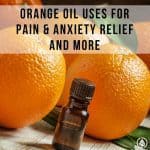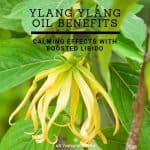A natural medicine cabinet staple is comfrey oil which comes from a medicinal herb that’s used for treating wounds, bruises, sprains, and more. However, it contains natural compounds that may harm your liver.
Is “knit bone” in your natural medicine cabinet? If not, stock up on it. But only if you learn about its side effects and how to avoid them.
A traditional herbal medicine that dates back several centuries, knit bone is better known as comfrey. It’s most famous for treating wounds, sprains, sores, and pustules, etc.
And, as its informal, folksy name implies, it may even help heal bone fractures.
In addition, since the early 20th century in Germany, it’s been used to treat musculoskeletal conditions such as arthritis.
Modern research proves it isn’t a quack, New-Agey, remedy. In fact, there’s several studies supporting the use of it.
Even for what the Germans were using it for 100 years ago. (See research below).
This herb shines as an all natural solution not only for injuries, but basically any skin condition.
However, if you want to start using it, don’t use a tincture. Tinctures have alcohol. And there’s a particular naturally-occurring alcohol that might be toxic to your health.
That’s why comfrey oil side effects aren’t as much of a concern as the herbal tincture. This is because there’s no alcohol in it. (More on side effects to come….)
Allan Who?
There are several therapeutic compounds in the plant. But the one that really stands out is allantoin.
Allantoin is a natural chemical compound extracted from the herb.
It sheds the outer layer of the skin. By doing this, it stimulates healthy skin tissue formation.
Moreover, allantoin softens the skin. Not only that, it helps your skin absorb more moisture.
It’s a good reason why allantoin is an ingredient in several skin-care products. In fact, according to this study, 1,376 cosmetic products include it in their formulations (at concentrations of up to 2%.)
Comfrey oil is effective, not only because of allantoin, but other natural components as well. But here’s what researchers know about why it works.
First, it fights inflammation. Secondly, it has natural pain-relieving properties. Also, it helps form new connective tissue as well as microscopic blood vessels.
This tissue helps speed wound healing. Furthermore, allantoin prevents the pus from leaking out of blood vessels and entering nearby tissues.
Comfrey Oil: how to use it
You already know how to not use the herb. Remember? Avoid tinctures because of the alkaloid content.
This research in the Journal of Chiropractic Medicine suggests the safest way to use the herbal extract is applying a cream that contains it to your skin.
How well does a cream work?
Well, this study suggests that applying a 10% active ingredient cream for two to three days significantly heals wounds fast.
But don’t use the cream for longer than a few days. If you do, there may be negative side effects.
As an oil the herb is effective as a base for salves. In addition, you can also use it when making a homemade poultice.
Poultices also help speed healing from wounds, bruises, etc.
However, don’t use it on deep wounds. Because it helps regenerate the outermost layer of your skin, the deeper layer may not be able to heal.
Thus, if you use it on a major gash, you may develop a skin infection. But that doesn’t mean you can’t use it for serious injuries.
In fact, with certain injuries in which a cast cannot be used to mend a broken bone, it may help heal and regenerate muscle tissue. Broken ribs come to mind in this regard.
“Urine” Luck?
Perhaps you might be put off learning that allantoin is present in ape pee.
Yes, you heard correctly, the urine in higher apes, to be exact.
“Gee whiz, you say?” (pun intended)
Well, don’t worry, using this herb isn’t the same as rubbing ape urine on your skin.
Rather, allantoin is what you get when uric acid oxidizes. And when you eat food with lots of purines, which can lead to gout, those purines metabolize into allantoin.
But as homo sapiens, we don’t pee allantoin. (Instead, we excrete uric acid.)
But if you do have allantoin in your urine, it may indicate health problems, such as bacterial overgrowth. [SOURCE]
There are two choices for isolating allantoin. One is from cow urine. The other method is by extracting it from the plant. Take your pick!
Don’t want it from cow pee?
Then you’re in luck, no urine necessary. That’s because cosmetic products with allantoin use the botanical extracts.
Several acne-fighting products as well as sunburn treatment lotions contain allantoin. You can also find it in toothpaste and mouthwash.
It’s even in shampoo, lipstick and lots of other over-the-counter cosmetics and prescriptions.
Make Your Own Natural First Aid Herbal Remedy
If you want to make your own comfrey oil, it’s pretty simple.
Grab a mason jar and some olive oil. And, of course, the herb. (It grows in many places in North America, as well as the U.K., especially in riparian/river bed zones.)
Place all the plant matter–stalk, leaf and flowers–in a jar. Pack the plant matter down. There should be an inch or two of spongy give.
Next, fill the jar with olive oil. Let it sit in a dark pantry for 3 to 4 weeks.
Just make sure that the plant matter is dry (but not dried; you should use fresh plant matter).
Research on Allantoin
A 2010 study by Brazilian researchers evaluated whether or not using comfrey oil four wounds is legit. Lo and behold, it is.
The study, however, was done on rats. And you can’t exactly translate findings on rodents to humans.
However, the results are promising and they suggest doing more research on the plant extract.
The rats were assigned into one of three groups.
Group one is the control group (no treatment). The second group was treated with a lotion without allantoin while the third group received a lotion containing 5% allantoin extract.
The rats were topically administered for 14 days. However, 14 days might be excessive if you’re concerned about side effects.
Nonetheless, research suggests that the speedy wound healing occurs because allantoin regulates the inflammatory response. In addition, it stimulates the building blocks that generate new skin cells.
The 2010 study was the first to show how exactly allantoin works on injured tissue.
In this plant therapy journal, the researchers suggest that it’s not only allantoin that makes the herb so therapuetic. Rather, it’s the interaction of other compounds as well.
In the above study, the researchers use a water-based solution. Though this has already been mentioned a few times in this article, it’s important to reiterate this essential fact:
Using an oil or water-based solution is safe.
On the other hand, using a tincture may not be. Because of the alkaloids.
The alkaloids in the herb may be toxic to the liver. Especially if used in large or frequent amounts.
More Benefits of “Knit Bone”
Knit bone may even benefit your brain. This research shows allantoin has the potential to treat the cognitive dysfunctions of Alzheimer’s disease.
And according to this study, it might also help ease high blood pressure.
Moreover, this study shows that it can ease the pain of osteoarthritis. And the study wasn’t done on rats, but humans.
The group treated with the root extract three times a day for six weeks were able to relieve their symptoms.
In addition, this research concludes a cream made from the root decreases pain. Also, it improves function in acute ankle sprains.
Side Effects
But what about those side effects?
Is it still a concern of yours?
If so, take comfort in comfrey oil because The International Journal of Toxicology considers it safe.

Comfrey essential oil
Most often, if you want a bottle of it in oil form, it will include olive oil.
Another common botanical to combine with it is lavender.
The oil makes for an excellent base for combining any of your favorite healing essential oils.
Comfrey root tea
According to this herbal tea website, there’s plenty of nutrition in this healing herbal tea.
For example, there’s calcium. And other trace minerals such as phosphorus, copper, magnesium, manganese, and zinc.
If you drink the tea, you’re also getting B vitamins and even some vitamins A, C and E.
Most people drink it for digestive ailments. Historically, this tea has been used for various abdominal upsets such as diarrhea and ulcers.
Moreover, it may also help ease inflammation in the throat and respiratory system.
And and the research says above, allantoin may help lower blood pressure. So by drinking the tea, you might be reducing the effects of hypertension.
But to be on the safe side, don’t drink the tea everyday, only when necessary.
Where to buy comfrey
If you want to buy the plant, many garden supply stores sell it.
One such nursery that advertises this medicinal herb is Peaceful Valley Farm Supply. On its product page, it says the vivid purple dangling flowers will attract bees and butterflies.
A hardy plant, it tolerates cold temperatures. In fact, it can survive sub-freezing conditions. This tender perennial will yield several leaves that you can use to make your own comfrey oil.
If you want just the leaves, you can get an ounce of dried, cut herb for less than $10. In addition, you can also buy seeds online.
For the oil, you have lots of choices. An easy way to get it is where else, of course, but Amazon.
A final word on taking this herb for healing….
As mentioned above, a prominent journal declared that for the over 1,300 products containing allantoin, it’s safe. But keep in mind that it was only in applications of up to 2% active allantoin.
Other online reports urge strong caution against taking any form of comfrey. Not just internally, but externally as well.
That’s because your skin, being your largest organ, can absorb it. This may put you at greater risk for the toxins entering your tissues and bloodstream.
In light of this, be on the safe side. Don’t use it for long periods of time.
And if you’re going to use a skincare product that contains allantoin, make sure it’s only around a 2% active ingredient.
In conclusion, to be even safer than sorrier, consult an herbal expert or medical professional before using it.







